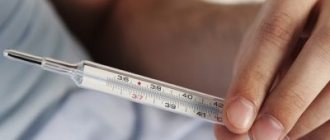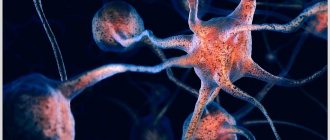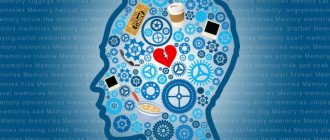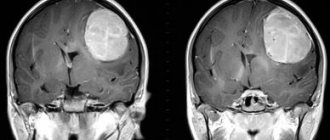A baby is born with most of the brain cells that this organ should have. In the first 12 months of life, the cerebrum (CB) becomes more complex; by the time it reaches 2 years of age, it has 75% of the weight of the adult brain. At the age of 3 years, the percentage of weight increases to 90%. Almost 50% of brain cells present at birth weaken or die during the first years. This process organizes and optimizes brain activity. Events in a child’s life provoke electrical impulses and create nerve fibers. The more fibers are used, the more stable an important organ becomes, the fewer neurons are susceptible to death. Similar to muscles, children's brains operate on a “use it or lose it” principle.
Brain waves
Brain waves are an expression of the frequency at which an organ operates. During the day they change, which causes a change in the person’s condition. Waves are divided into 5 types:
- delta;
- theta;
- alpha;
- beta;
- gamma.
All waves are active, consciousness is influenced by the dominant brain wave. Each wave type plays an important role in the formation of intelligence in childhood.
The activity and capabilities of the brain are described in a number of books by V.M. Bekhterev (they can be downloaded from many specialized sites).
Below is a diagram of wave frequencies and corresponding states of mind.
Beta (14-30 Hz):
- concentration, excitement, alertness, cognition;
- high levels are associated with anxiety, illness, loneliness, and arguments.
Alpha (8-13.9 Hz):
- relaxation, wakefulness, light trance, increased serotonin production;
- drowsiness, meditation, entering the subconscious.
Theta (4-7.9 Hz):
- REM sleep phase;
- increased production of catecholamines (important for learning and memory), increased creativity;
- integrative, emotional experiences, potential behavioral changes, increased knowledge retention;
- hypnotic imagination, trance, deep meditation, penetration into the subconscious.
Delta (0.1-3.9):
- "sleepless sleep";
- release of growth hormone;
- deep, non-physical state, trance;
- entrance to the subconscious.
Prenatal development
Consideration of the question of how a child’s brain develops should begin from the time the embryo is formed. It is formed in the womb from the anterior part of the neural tube, which appears in the 3rd week (20-27 days of development). The neural tube is formed by primary and secondary neurulation. At the head end of the neural tube, 3 primary cerebral recesses are formed - anterior, middle, posterior. At the same time, the frontal, parietal, and occipital lobes are created. The neural disc arises from the neuroectoderm.
At week 5, secondary medullary pads form, forming the main parts of the adult organ. The forebrain is divided into the intermediate telencephalon, the hindbrain into the medulla oblongata, pons, and cerebellum.
Gyrification of the hemispheres occurs sequentially. First, a longitudinal fissure is formed (determined by the fact that the hemispheres grow separately), then the lateral sulcus (separates the temporal lobe), after which the central sulcus.
Features of the prenatal stage of child brain development:
- Week 3: creation of a medullary (spinal) tube;
- Week 4: expansion of the proximal tube into 3 primary and 5 secondary follicles;
- Week 6: Neuroblasts begin to develop into mature neurons;
- 2nd month: the cerebellum, the base of the neurohypophysis, rhinencephalon (olfactory center), hippocampus, basal ganglia develop; at this stage, the cerebral hemispheres begin to develop;
- 3rd month: the corpus callosum begins to form;
- 4th month: brain development in children continues with intensive separation of the hemispheres (gyrification), an increase in their surface;
- then the children's brain experiences proliferation, differentiation, migration, maturation of nerve cells, growth of supporting elements; Myelination begins from the end of intrauterine life.
Different areas of the brain are active at different ages
Brain studies have shown that completely different areas of the brain are most active in adults and children.
In children, the brain stem and midbrain are primarily active. The brain stem controls the heartbeat, blood pressure and body temperature. The midbrain is responsible for arousal, feelings of appetite/fullness, and sleep.
In adults, the main working areas are the limbic system and the cerebral cortex. The limbic system controls sexual behavior, emotional reactions and motor activity. The cerebral cortex is responsible for concrete thinking, meaningful behavior, and emotionally charged behavior.
Neonatal development of GM
Humans are the only mammals whose GM increases 3 times in size in the first 2 years of life. If it had been larger at birth, the baby's head would not have been able to pass through the birth canal. If the volume were small, the baby's life would be at risk.
Insufficient size of the brain is observed in microcephaly, an anomaly accompanied by mental impairment.
How does a child's brain develop before one year of age?
- at birth it weighs about 350 g, up to 1 year - about 1 kg;
- At birth, the brain has about 200 trillion neurons (nerve cells) - about the same as in adulthood;
- each neuron responds to stimulation of a growing system of dendrites (branched nerve cells) and synapses (the place where signals are transmitted from one neuron to another);
- each neuron ends in dendrites with approximately 15,000 synapses;
- dendrite formation becomes more complex over time, with 3-4 branches before the age of 6 months;
- the more stimuli the GM captures, the better the dendrites become;
- the anterior lobe (the part responsible for emotions) becomes metabolically active from 6 months (the neural basis of emotional intelligence is formed before 18 months);
- over the course of 2-4 months, the number of synapses in the visual center increases 10 times (approximately 20,000 neurons);
- up to 12 months, the neurons responsible for identifying the native language find their permanent place.
Development of brain connections
The structure of the human brain is built continuously from the moment a person is born. The first years of a person's life directly influence the structure of connections between neurons, forming either a strong or fragile foundation for further learning, mental health and behavior. During the first years of life, 700 new neurons are formed every second!
The first to develop are sensory areas necessary, for example, for vision or hearing; then the areas of language skills and cognitive (cognitive) functions enter. After the first period of rapid growth, the number of connections formed decreases due to the process of aging - the removal of unused connections between synapses so that the signal paths from neuron to neuron become more efficient.
GM development during the first years of life
The newborn's brain is anatomically and functionally immature. During the breast period, it grows rapidly, the number of glial cells increases, and hydration decreases.
At the end of the 1st year, the weight of the GM doubles. The development of a child’s brain occurs intensively over the years; in the process of ontogenesis, innate unconditioned reflexes are replaced by conditioned ones.
At 3 years of age, the brain weighs approximately 3 times more than at birth. The ability of abstraction, learning, and memory is used; the child realizes his personality and becomes a social creature.
The first years of life are a critical stage for a child's brain development and provide the neurological foundation for intellectual development in adolescence and adulthood.
In the early years, children are very open to science through play. For young children, play is a way of preparing for a successful future life. Therefore, during this period, parental love and plenty of time spent together are important.
At 6 years of age, the weight of the brain is almost equal to the weight of the adult human brain (1250 g). The hemispheres are expressively grooved. Branching of neurons, myelination (creation of a covering that protects large nerve fibers from damage) are completed, memory and the ability to recreate memories improve. In the activity of the GM cortex, the ability of internal blocking is used; the child distinguishes between what he says, thinks, and reads.
During the first 8 years of life (especially the first 3 years), there are several critical periods for the acquisition of certain types of intelligence. If these “periods of opportunity” are closed, learning becomes more difficult, sometimes even impossible.
In adolescents, the GM grows mainly in the anterior lobes, its weight is about 1400 g.
Brain diseases in children
Because the brain develops during fetal life and relatively long after birth, its individual structures are more susceptible to damage. On the other hand, the nervous system of a child, compared to an adult, has better plasticity and the ability to regenerate, for example, after a blow, concussion, or inflammation.
The following pathologies are recorded in pediatric neurology and neuropsychology:
- cerebral palsy and other disorders of the nervous system - congenital malformations and various genetic syndromes, developmental delay, autism, as well as inflammation, tumors, injuries;
- heredogenerative diseases, metabolic defects that can (not necessarily) affect other organs;
- epilepsy - in addition to idiopathic epileptic syndromes (without apparent causes), seizures can be a symptom of another GM disease - cancer, birth defects, degenerative, metabolic diseases; epilepsy is more common in children with cerebral palsy.
Diseases in premature babies
Premature babies undergo regular ultrasound examinations. Because the blood vessels are fragile and unable to respond to changes in blood flow and intracranial pressure, bleeding into the brain may occur. This is the most common problem in the first few days after birth in very low birth weight babies.
Another specific brain disease of premature infants is cystic periventricular leukomalacia. It is a white matter disorder that leads to the formation of cysts. The basis of this disease occurs during fetal development or immediately after birth, but the diagnosis can only be determined after several weeks.
Development of the frontal lobes of the brain in children from 3 to 7 years old
It’s not for nothing that 3 years and 7 years are age-related crises for a child. These are periods of mental neoplasms that are the result of the development of the brain, and in particular the frontal lobes.
At the age of 3, we can already talk about praxis as precisely the sphere of voluntary conscious objective actions. That is, the parietal and premotor cortex is included as the top of the motor system (subject to the maturation of the “lower” floors that respond to elementary motor functions).
At 3 years old, a child is able to follow general rules (for example, in kindergarten), follow instructions, and resist distraction. For him, speech plays a regulatory function and retains it even in the presence of external distractions (this is why children with impaired understanding of spoken speech have such “hyperactive” behavior). One experiment showed that preschool children perceived instructions better orally compared to those shown visually (on cards). That is, the auditory-speech analyzer has priority over the visual one in activity (by the age of 6-7 years they become equal as the ability to mediate information by sign increases).
At the same time, a child’s own speech from the age of 3 plays the role of additional stimulation in his activities. However, up to 5 years of age, this stimulus is general, not selective, that is, it does not help the child avoid mistakes or inhibit himself (no selectivity). By the age of 5, the most important moment in the system of self-control and self-regulation arrives: the system of selective connections in inner speech matures. That is, external speech for self-regulation becomes unnecessary, while the child can already direct his actions by making choices. (We remember that the diagnosis of ADHD is made from the age of 5, and we understand why - because the executive functions of the brain are not formed).
As for the serial organization of actions (for example, showing geometric shapes in a certain sequence that changes periodically), at 3 years old the child is still prone to inertia, it is difficult for him to flexibly adapt to changes in the program. The ability to make such a switch matures by the age of 4-5 years.
By the age of 6, voluntary attention increases due to the development of frontothalamic connections (that is, connections between the forehead and the thalamus). And if before this age a child could hold attention for a long time where he is interested and “wants” (the emotional component), then from the age of 6 the child is able to cope with impulsiveness and focus on the actual informational component of the activity.
It is necessary to emphasize once again that with the immaturity of 1 functional block of the brain (I wrote about this in the previous post) - the block regulating tone and wakefulness - the forehead matures later. This is why we so often see children who are restless, impulsive, and have poor self-control of emotions and behavior. Because in such cases, the primary deficit is the subcortical structures (resulting from CS, general anesthesia, hypoxia, asphyxia, etc.).
So, by the age of 7, that is, by the time he enters school, the child can:
- Assimilate and maintain the program of activities;
- Resist distracting stimuli, including your own impulses;
- To mediate activity through inner speech with a system of selective connections;
- Carry out conflicting instructions (if A...., then...., if B, then....) and flexible program switching.
It also has developed praxis and working memory. Able to rely on verbal and visual instructions.
Neuropsychologist Alexandrova O.A.
Make an appointment with a neuropsychologist by phone or fill out the form on the website.
How to promote the development of children's GM?
The intellectual basis of a person is largely formed already in the prenatal period. Therefore, in order to give birth to a smart, physically healthy baby, it is important for the expectant mother to focus on her lifestyle.
Just as calcium is the main building block of bones, protein is a component of muscles, one of the most important substances for the brain is fat. It accounts for about 60% of the dry part of the GM, about 1/3 is unsaturated fatty acids, in particular α-linolenic and docosahexaenoic acid, which are responsible for the proper formation of the nervous system and the mental development of children. B vitamins are also important, especially B1, B6, B12, B9 and other substances such as iron, iodine, zinc, protein.
Factors influencing brain development in adolescents
The most interesting period from the point of view of brain development is adolescence. This means that at this time he absorbs almost everything he encounters - from positive relationships with friends or teachers to risks, stress. Therefore, experts encourage parents to take care of how to develop their child's brain and help children avoid the risks of adolescence that could negatively affect their lives.
- Shake. A very dangerous problem for teenagers; can occur with any sport that children engage in during this period. If this situation occurs, you should consult a doctor, preferably a sports professional.
- Stress. Although the areas of the brain that deal with the rational aspects of things are often stuck in teens, their emotional brains are firing on all cylinders. Therefore, even minor criticism, banal for an adult, can be an important development factor for a teenager.
- Drugs and alcohol. The excessive activity of a teenager’s brain makes him literally a “sponge”, absorbing all information from the environment. The brain responds quickly to any new challenge, both positive and negative, such as various addictive substances.
Hypnosis is not recommended for children. MRI revealed significant functional changes in the brain after hypnosis.
How does a child's brain develop?
In previous posts about the brain, we wrote about how the brain matures. One of the main characteristic signs of maturation of a child’s brain is myelination of axons.
Today we will tell you a little more about which lobes of the brain mature first and what this affects.
The parietal lobes of the cortex begin to mature quite early, providing the child with an intuitive awareness of the fundamental spatial properties of the surrounding world. A game in which an adult closes and opens his face captivates infants whose parietal region is already working because, as they know, a face covered with hands cannot disappear, but the brain modules that will one day allow them to understand why are not yet mature.
The frontal lobes really start to fire up around six months of age, allowing babies to show their first glimpses of cognitive abilities. By the age of one year, the frontal lobes gain control over the aspirations of the limbic system. If you offer a one-year-old child two toys, he will choose one of them rather than try to grab both.
Until about a year old, babies are, as one developmental psychologist puts it, “robot-like devices”: their attention can be attracted by almost any visual stimulus. After this age, they form their own life plans (which are not always consistent with the plans of those around them).
Speech areas become active in the second year of life. The area responsible for speech perception (Wernicke's area) “comes online” after about twelve months of life, and after about another eighteen months it is joined by the area responsible for the ability to speak (Broca's area).
So there is a short period in the lives of young children during which they understand more than they can say. The difficulties associated with this may play a significant role in the attacks of “harmfulness” characteristic of two-year-old children.
Around the same time that speech areas are activated, intensive myelination of the prefrontal cortex of the frontal lobes begins. During this period, children develop self-awareness: the child no longer points a finger at his reflection in the mirror. And if you smear a child with colored powder when he looks at himself in the mirror, he will simply wipe this smear from his face, and will not try to erase it from the mirror, as happens at an earlier age.
Self-awareness presupposes the emergence of an inner performer - the same “I” that, according to many, is felt as something that exists in the head.
Some areas of the brain take many years to mature. For example, the reticular formation, which plays an important role in maintaining attention, is usually completely myelinated only at puberty or later. This is why prepubertal children have a short attention span.
The frontal lobes are completely myelinated only in fully grown people. These parts of the brain are responsible for thinking, reasoning, and suppressing emotions, and until they mature, people in general are driven more by feelings and less by reason. In this regard, young adults are more emotional and impulsive than older people; they are more prone to unjustified risks and committing crimes in a state of passion.
We talk in more detail about brain development in modules 1 and 2 of the Child and Adolescent Coaching Program. Find out more at the link
The article was prepared based on information from the book “How the Brain Works” by Rita Carter.
#coach #coaching #ICIYA #coachforkids #coaching for teenagers #children's coaching #program for children and teenagers coaching #coaching #coach #coaching institute #children #teenagers #parenting #parenting #family #Russia #Moscow #brain #braindevelopment #braincomb #myelination #thinking feelings #affect #speech








